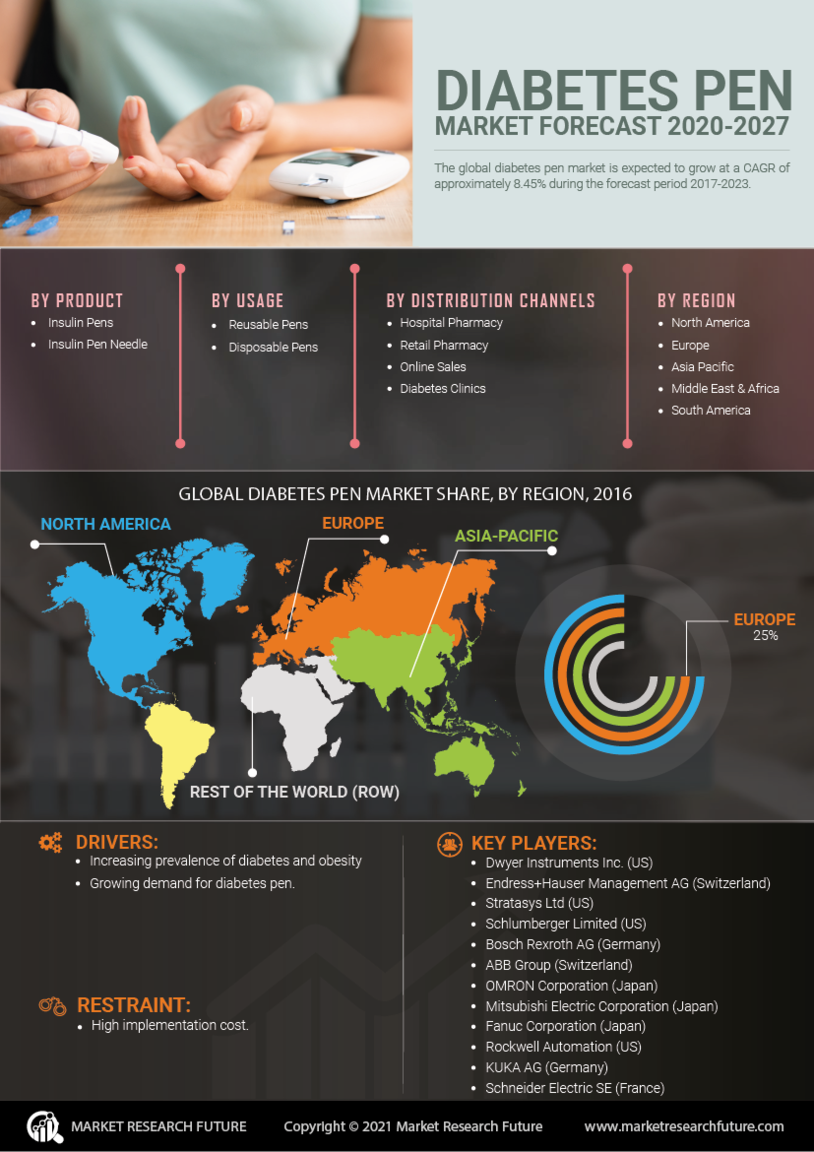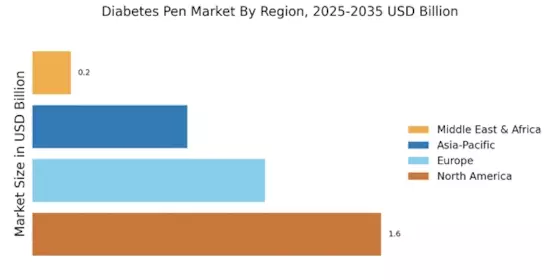Rising Prevalence of Diabetes
The increasing incidence of diabetes worldwide is a primary driver for the Diabetes Pen Market. According to recent statistics, the number of individuals diagnosed with diabetes has reached alarming levels, with projections indicating that by 2045, approximately 700 million people will be living with the condition. This surge in diabetes cases necessitates effective management solutions, thereby propelling the demand for diabetes pens. As patients seek more convenient and user-friendly options for insulin delivery, the Diabetes Pen Market is likely to experience substantial growth. Furthermore, the rising awareness about diabetes management and the importance of maintaining optimal blood glucose levels further fuels the market, as healthcare providers increasingly recommend diabetes pens for their ease of use and precision.
Government Initiatives and Support
Government initiatives aimed at improving diabetes care and management are significantly influencing the Diabetes Pen Market. Various countries are implementing policies to enhance access to diabetes treatment and education, which includes promoting the use of diabetes pens. For instance, subsidies and reimbursement programs for diabetes management tools are becoming more common, making diabetes pens more accessible to patients. These initiatives not only encourage the adoption of diabetes pens but also raise awareness about the importance of effective diabetes management. As governments continue to invest in healthcare infrastructure and support programs, the Diabetes Pen Market is poised for growth, driven by increased accessibility and affordability of diabetes management solutions.
Increasing Focus on Patient-Centric Care
The shift towards patient-centric care is transforming the Diabetes Pen Market. Healthcare systems are increasingly prioritizing personalized treatment plans that consider individual patient needs and preferences. This trend is evident in the growing demand for diabetes pens that offer customizable features, such as adjustable dosing and user-friendly designs. As patients become more involved in their own care, the market is likely to see a rise in the adoption of diabetes pens that align with their lifestyle and preferences. Additionally, the emphasis on education and support for diabetes management further drives the market, as patients seek tools that empower them to take control of their health. This focus on patient-centric solutions is expected to enhance the overall growth of the Diabetes Pen Market.
Technological Advancements in Diabetes Management
Technological innovations play a crucial role in shaping the Diabetes Pen Market. The introduction of smart insulin pens, which are equipped with features such as dose tracking and connectivity to mobile applications, enhances patient adherence to treatment regimens. These advancements not only improve the overall user experience but also provide healthcare professionals with valuable data for better management of diabetes. The market for smart diabetes pens is projected to grow significantly, with estimates suggesting a compound annual growth rate of over 15% in the coming years. As technology continues to evolve, the Diabetes Pen Market is expected to adapt, offering more sophisticated solutions that cater to the needs of patients and healthcare providers alike.
Growing Awareness and Education on Diabetes Management
The rising awareness and education surrounding diabetes management are pivotal drivers for the Diabetes Pen Market. Campaigns aimed at educating the public about diabetes prevention and management have gained momentum, leading to a more informed patient population. This increased awareness encourages individuals to seek effective management solutions, such as diabetes pens, which are recognized for their convenience and efficacy. Furthermore, healthcare professionals are increasingly advocating for the use of diabetes pens as part of comprehensive diabetes care plans. As educational initiatives continue to expand, the Diabetes Pen Market is likely to benefit from a growing demand for innovative and user-friendly insulin delivery systems that align with the needs of patients.


















Leave a Comment